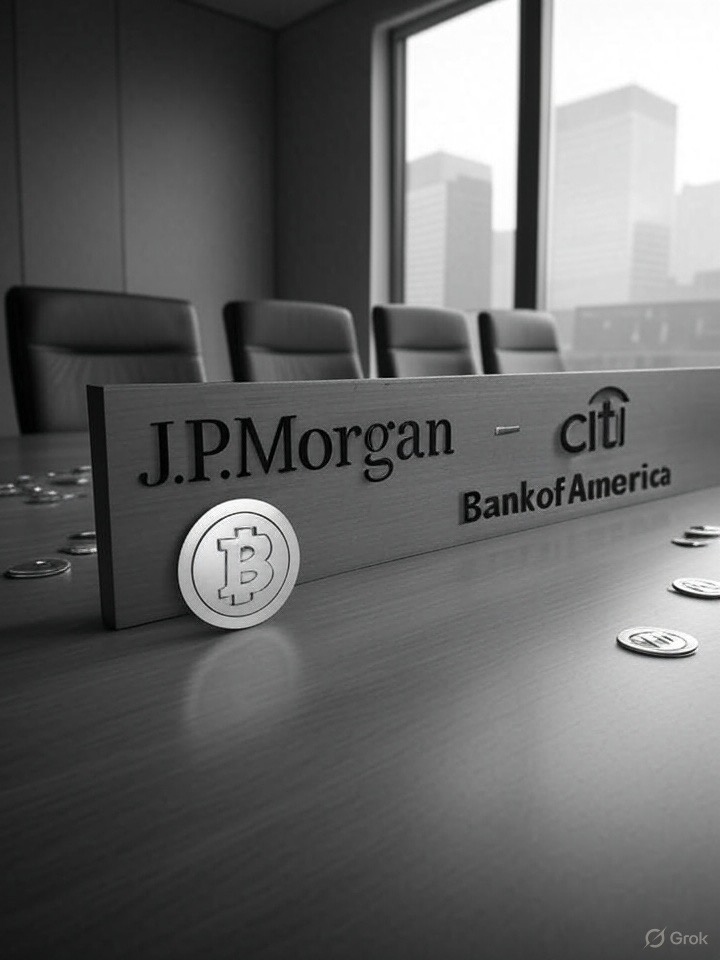The idea of banking consortiums exploring blockchain technology and cryptocurrencies is not new. We’ve seen this narrative unfold with J.P. Morgan’s Coin System, now evolved into Kinexys and other banking groups eyeing settlement coins to stay relevant and competitive. It’s perhaps unsurprising that this news has surfaced following the inauguration of a pro-cryptocurrency U.S. presidency under Donald Trump. The Trump-backed World Liberty Financial USD1 stablecoin has reached a market cap of $12 billion, while the leading stablecoin, USDC, boasts $61 billion, according to Blockworks. Major banks are now recognising the commercial viability and demand for stablecoins, especially as central bank digital currencies (CBDCs) have largely faltered.

The Stablecoin Exception
Stablecoins may face hurdles in countries with significant governance challenges, such as high levels of corruption or limited financial transparency. For example, Jamaica has adopted a CBDC, named Jam-Dex, launched in 2022 to enhance financial inclusion and reduce transaction costs for the unbanked. Some argue that CBDCs like Jam-Dex could address corruption by offering centralised oversight and transaction traceability. However, the debate persists over whether centralised CBDCs or decentralised stablecoins are more effective. Centralised systems might enhance accountability in broader societal contexts, while less centralised stablecoins could mitigate risks of corruption from central authorities. Ultimately, blockchain’s transparency, whether centralised or decentralised, offers a step forward in promoting accountability in financial systems.
The Skinny
Details of this consortium’s plan involving The conversations have so far involved companies co-owned by JPMorgan Chase (JPM.N), Bank of America (BAC.N), Citigroup (C.N), Wells Fargo (WFC.N) and other large commercial banks, this remains speculative and has not been officially announced. The story, reported by an insider to the Wall Street Journal, should be taken with caution, as plans may change. Nonetheless, we can speculate on the rationale and piece together the broader picture.
The Rationale
- J.P. Morgan’s Leadership: J.P. Morgan Chase has been a pioneer in permissioned blockchain technology, launching its J.P.M Coin System and later Onyx, which collaborated with other banks. This evolved into Kinexys, a standalone service [Link to article]. J.P. Morgan’s technological expertise and ambition position it as a likely tech provider for other financial institutions in the fintech and blockchain space.
- Stablecoin Versatility: Stablecoins serve as utility settlement tokens but offer greater flexibility for consumer markets, functioning as both a currency and a payment settlement mechanism. It’s logical for J.P. Morgan and other banks to pursue a share of the consumer payments market to compete with existing stablecoins.
- SWIFT’s Limitations: The current SWIFT system is not suited for the demands of U.S. and global AI advancements. As reliance on AI models grows, there’s a need for fast, seamless, and low-cost settlement systems. Stablecoins are well-positioned to meet these requirements.
Conclusion
Stablecoins are set to redefine the future of financial transactions, offering unparalleled speed, efficiency, and adaptability. As AI technologies increasingly shape global economies, the demand for blockchain-based payment solutions will surge. Stablecoins, with their ability to facilitate rapid and cost-effective settlements, are uniquely positioned to become the backbone of next-generation financial systems, driving innovation and accessibility in the digital age.
